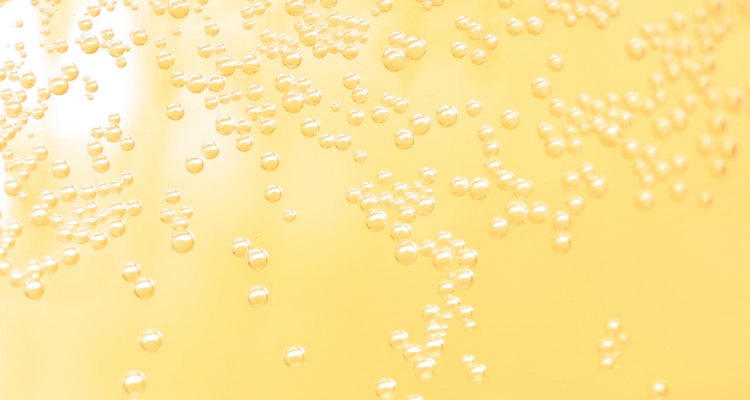
Jupiterimages/Photos.com/Getty Images
When beer connoisseurs call a beer "dry," they mean that it has little or no sweetness. Dry beers often combine this lack of sweetness with a clean absence of aftertaste. Since the 1980s, some beers have been marketed as "dry," but not all dry beers have the word on the label.
Brewing Process
Dry beers get their characteristic taste from the brewing process. During brewing, yeast ferments sugars in the wort, turning them into alcohol and carbon dioxide. Sweetness in beers comes from residual sugars that have not been fermented. The dry beer brewing process involves using special yeast to ferment as much of the sugar as possible. As a result, the beer has a characteristic flavor created by the reduced sweetness. Dry beers typically also have a high level of carbonation and may have a higher alcohol content than standard, sweeter beers. Some dry beers also contain high levels of adjuncts such as rice or corn.
Asahi Super Dry
Asahi Super Dry, introduced in Japan in 1987, was the catalyst for the popularity of modern dry beers. Seeing how popular Asahi's dry beer was, other Japanese breweries followed suit. Before long, American breweries were also offering dry beers. Asahi Super Dry's light flavor was developed in response to consumer demand for a beer that could be paired with food such as sushi without overwhelming the food's delicate flavor.
American Dry Beers
Inspired by the success of dry beers in the Japanese market, American breweries quickly set about producing their own dry beers. Although initially popular, major brands such as Bud Dry faltered. Budweiser discontinued its dry offering in 2010. Some American dry beers are dry-hopped, meaning that hops are added during the brewing process. The result is a much hoppier aroma than a Japanese dry beer but the same lack of sweetness without excess added bitterness. Examples include Anchor Brewing's Liberty Ale or Sierra Nevada Brewing's Torpedo Extra IPA.
European Dry Beers
Dry beers are not uncommon in Europe, particularly Central Europe. However, European dry beers are more likely to be dry-hopped rather than dry in the same way as Japanese dry beers. Holsten Diat Pils is a dry German pilsner that shares the low sugar content of Japanese dry beers; it is marketed as suitable for diabetics because of this. Irish stouts such as Guinness or Beamish are sometimes called "dry stouts"; they are dry compared with some other types of stout but don't have the light flavor and absent aftertaste of a dry lager like Asahi Super Dry.
Related Articles

Red Wines That are Considered Dry

List of the Different Types of Champagne
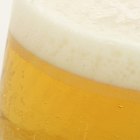
German Beer Vs. American Beer

Is Cabernet Sauvignon a Substitute for ...

What Is the Primary Difference Between ...
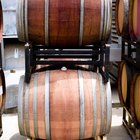
Brandy vs. Whiskey

Red Wines That Need to Be Chilled

What Is the Difference Between a Dirty ...
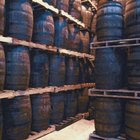
The Difference Between Single Cask & ...

What Does VSOP Mean?

Substitutes For Tequila

What Liquors Are Made From Sugar Cane?

What Are Rusk Crumbs?

Wines to Serve With Cajun or Creole Food
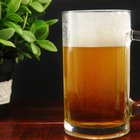
What Can You Put in Beer to Make It ...

How to Cook Ruby Red Jasmine Rice

Types of Amber Wine

How to Store Cognac

How to Determine if Wine is Sweet or Dry

How Much Is a Single Serving Size of a ...
References
- Brookston Beer Bulletin: Beer Tasting Terms
- The New York Times: "Dry" Beers Flood Market -- A Wave or A Mirage?
- The Telegraph: Asahi Super Dry -- Wastes Not, Wanted a Lot
- Anchor Brewing: Liberty Ale
- The Kitchn: Dry-Hopped Beers -- More Hops, More Awesome?
- Beer Advocate: Holsten Diat Pils
- Beer Advocate: Irish Dry Stout
Writer Bio
Dr James Holloway has been writing about games, geek culture and whisky since 1995. A former editor of "Archaeological Review from Cambridge," he has also written for Fortean Times, Fantasy Flight Games and The Unspeakable Oath. A graduate of Cambridge University, Holloway runs the blog Gonzo History Gaming.
Photo Credits
Jupiterimages/Photos.com/Getty Images